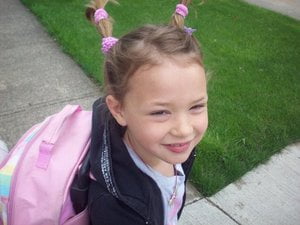When my children were young, walking to the library was an almost daily occurrence. Granted, the playground was our final destination, and wearing out the kids was my ultimate goal, but gathering a few new books to read after lunch became a part of our routine.
Smack dab in the middle of babies and preschoolers, some days it seemed I accomplished little else than the bare minimum. We didn’t have a lot of luxuries, but if nothing else, I gave my kids steady diet of words.
It is estimated that children can learn up to twenty words a day. This results in up to 7,000 new words a year. Not only does a wide vocabulary help a child express themselves more accurately, learning a wide variety of words will help a child decipher meanings and context in future studies. Casual exposure to large words is easier when you clear a path and ditch some of the pop culture.
Ditch the pop
Instilling a love of words is hard to do when you rely on children’s programming. The long pauses and simplistic themes frustrated me, so we skipped most of the pop culture icons and I directed their attention to authors I liked growing up. Ronald Dahl is one author that never talked down to kids. He used big words without hesitation. Giant words like pandemonium and enthralled, became part of the day to day vocabulary of my son.
Read above level books
Picture books are fun to read, and early readers can help your child successfully master reading, but don’t be afraid of classic stories, fairy tales, and books that you enjoyed as a child. Just because your child cannot read the book himself does not mean he won’t enjoy the plot and characters. Look for books that are far above their reading level, books full of rich, descriptive vocabulary and interesting themes. Instead of Spot the Dog, read Magic Tree House, or Little House on the Prairie.
Reader’s theater
One way to incorporate rich vocabulary into your child’s life is with recorded books. My son loved to listen to dramatic versions of C.S. Lewis stories while playing with his Legos. You can invest in a collection of classic stories or borrow one at a time from the library.
Rhyme time
While there is a definite place for big words and deeper themes, The Cat in the Hat and other rhyming books are an excellent way to introduce and reinforce rhyming words. Call out a simple word from the book and see how many rhyming words they remember or can come up with.
Play games
Challenge your kids not to settle for simple words by playing with synonyms and descriptive words throughout the day. For example, take turns coming up with substitute words for “big” or “small.” You can ask your child to describe their lunch using as many descriptive words as possible. Count the words as they go and then challenge them to beat their best number tomorrow, or at the next meal.
The long term benefits of a large vocabulary far outweigh the extra effort involved. A child whose mind is engaged and is stretched to learn has an advantage over their peers. Brain development, vision strength and ultimately test scores can all be traced to the size and quality of a child’s vocabulary according to studies such as found in Start Early, Finish Strong: How to Help Every Child Become a Reader, as well as my own experience.
More by Sylvie Branch:
Overtired Toddler? Strategies to Regain Calm and Induce Sleep
5 Ways to Loosen the Grip Technology Has Over Your Family
Keeping Track of the Family: What System Works for You?





